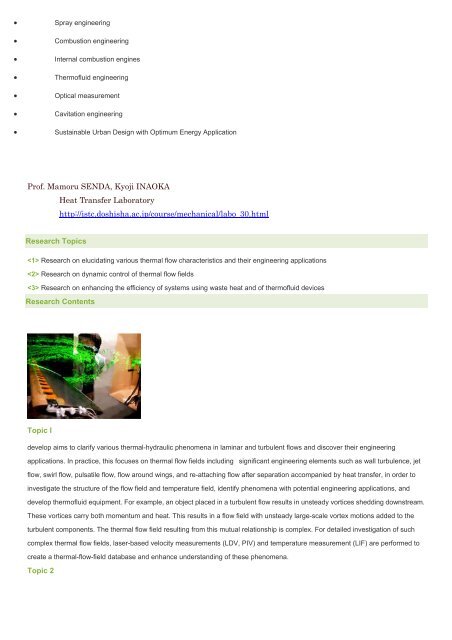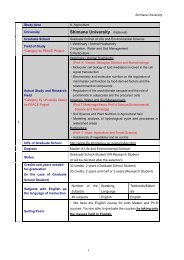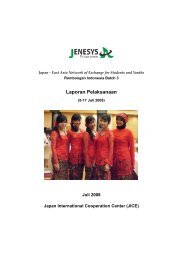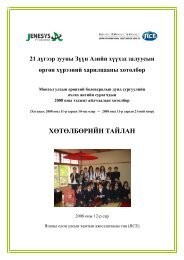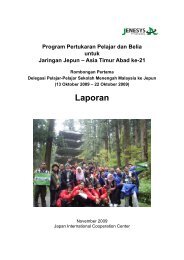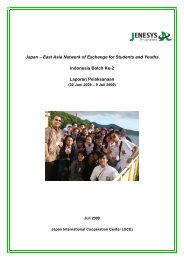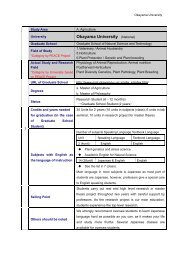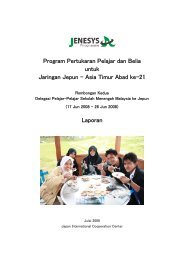Doshisha University (Private)
Doshisha University (Private)
Doshisha University (Private)
You also want an ePaper? Increase the reach of your titles
YUMPU automatically turns print PDFs into web optimized ePapers that Google loves.
Spray engineering<br />
Combustion engineering<br />
Internal combustion engines<br />
Thermofluid engineering<br />
Optical measurement<br />
Cavitation engineering<br />
Sustainable Urban Design with Optimum Energy Application<br />
Prof. Mamoru SENDA, Kyoji INAOKA<br />
Heat Transfer Laboratory<br />
http://istc.doshisha.ac.jp/course/mechanical/labo_30.html<br />
Research Topics<br />
Research on elucidating various thermal flow characteristics and their engineering applications<br />
Research on dynamic control of thermal flow fields<br />
Research on enhancing the efficiency of systems using waste heat and of thermofluid devices<br />
Research Contents<br />
Topic I<br />
develop aims to clarify various thermal-hydraulic phenomena in laminar and turbulent flows and discover their engineering<br />
applications. In practice, this focuses on thermal flow fields including significant engineering elements such as wall turbulence, jet<br />
flow, swirl flow, pulsatile flow, flow around wings, and re-attaching flow after separation accompanied by heat transfer, in order to<br />
investigate the structure of the flow field and temperature field, identify phenomena with potential engineering applications, and<br />
develop thermofluid equipment. For example, an object placed in a turbulent flow results in unsteady vortices shedding downstream.<br />
These vortices carry both momentum and heat. This results in a flow field with unsteady large-scale vortex motions added to the<br />
turbulent components. The thermal flow field resulting from this mutual relationship is complex. For detailed investigation of such<br />
complex thermal flow fields, laser-based velocity measurements (LDV, PIV) and temperature measurement (LIF) are performed to<br />
create a thermal-flow-field database and enhance understanding of these phenomena.<br />
Topic 2


